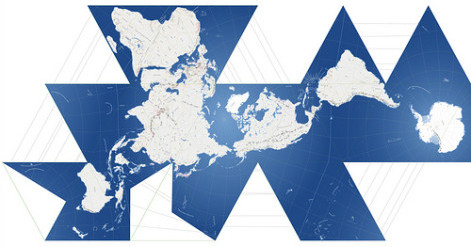
 )
)Global concerns from climate to nuclear proliferation weigh heavily as we begin 2017. So a pair of stories about the international flow of information and standardization caught my eye. First up, a study on language barriers in science communication. Major journals are all in English, or maybe a journal needs to be in English to have enough readership to be considered major. Scientists in many countries are expected to publish in English regardless of their native language, in order to be part of the international community of their discipline. Still, plenty of research results are published exclusively in other languages. Being familiar with that literature can be important, especially when making decisions with global implications and which require local implementation in the context of unique environments. Automated translation may be helpful, although high average accuracy of translation may not be adequate when the details matter just as much as the gist. I’m personally curious if the high-level differences between languages (e.g. expressions of tense) affect not only what is reported and how, but also which kinds of research questions get asked in the first place.
Numbers represent yet another form of communication, and on that front international compatibility is higher and still improving. While the perception is that America stubbornly lags behind the rest of the world in adopting the metric system, the reality is more complicated and more positive. Many Americans may personally deal exclusively in pounds and feet, but “under the hood” kilograms and meters have been integrated more widely than you realize. Ease of international trade is one motivating factor; standardization of scientific research is another. Gaps still exist and can be rather jarring when encountered, but they are increasingly the exception rather than the rule.
Language barriers aren’t exclusive to scientific publication of course. All academic disciplines cross national boundaries. I understand that theology studies often require mastery of multiple languages, either to read Biblical texts in their original languages or to read seminal theological works originally published in Latin or German or French or what have you. And students increasingly cross national boundaries as well, bringing the world’s languages and cultures to campuses everywhere. While not all of us can make policy decisions for major academic publications, we likely still have opportunities to think about how to communicate with scholars and students who speak other languages. At my company of a dozen people, we are currently enjoying Russian lessons from our newest software tester.
What linguistic challenges are most common in your discipline? How can our classes and campuses better accommodate students from a different context than the majority at our institutions?
Andy has worn many hats in his life. He knows this is a dreadfully clichéd notion, but since it is also literally true he uses it anyway. Among his current metaphorical hats: husband of one wife, father of two teenagers, reader of science fiction and science fact, enthusiast of contemporary symphonic music, and chief science officer. Previous metaphorical hats include: comp bio postdoc, molecular biology grad student, InterVarsity chapter president (that one came with a literal hat), music store clerk, house painter, and mosquito trapper. Among his more unique literal hats: British bobby, captain’s hats (of varying levels of authenticity) of several specific vessels, a deerstalker from 221B Baker St, and a railroad engineer’s cap. His monthly Science in Review is drawn from his weekly Science Corner posts — Wednesdays, 8am (Eastern) on the Emerging Scholars Network Blog. His book Faith across the Multiverse is available from Hendrickson.

Leave a Reply